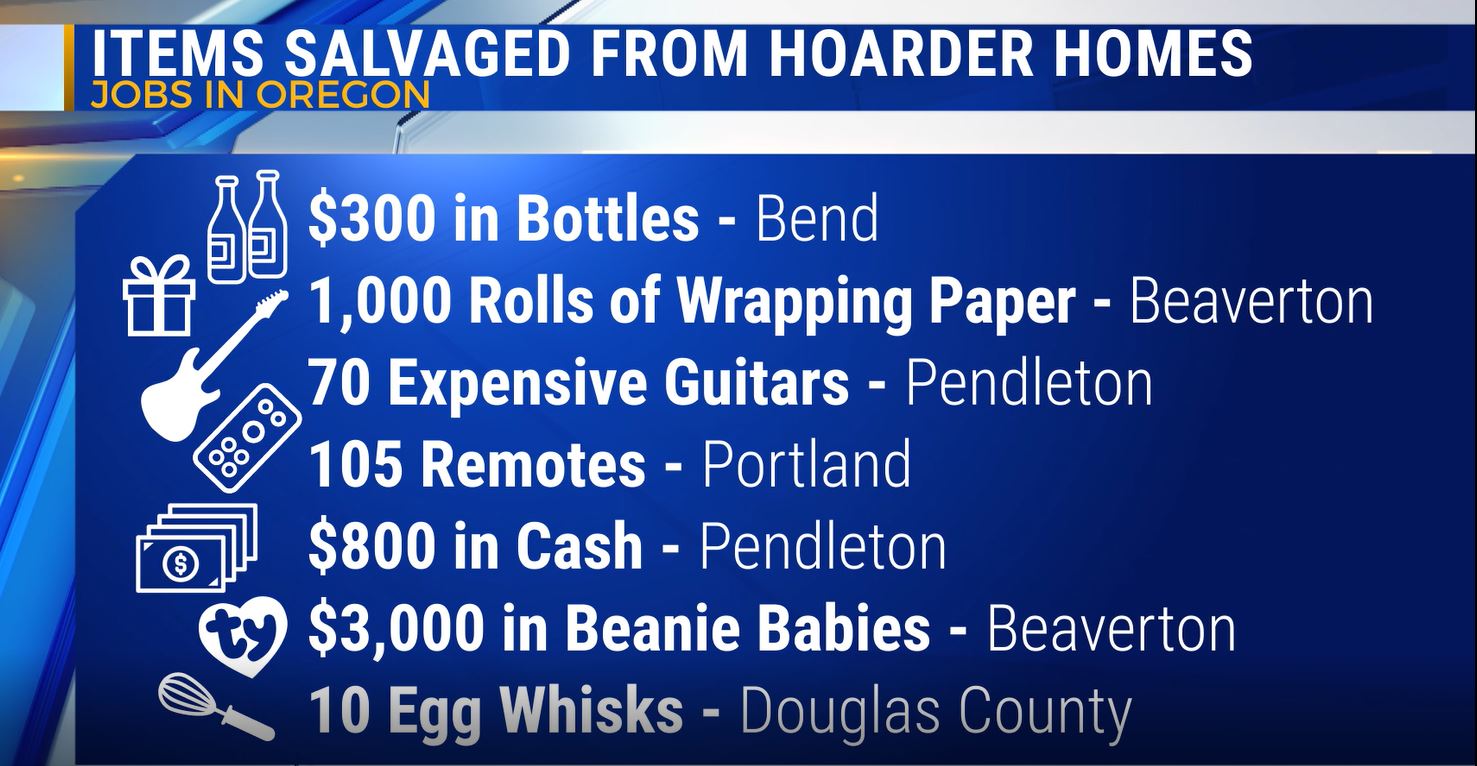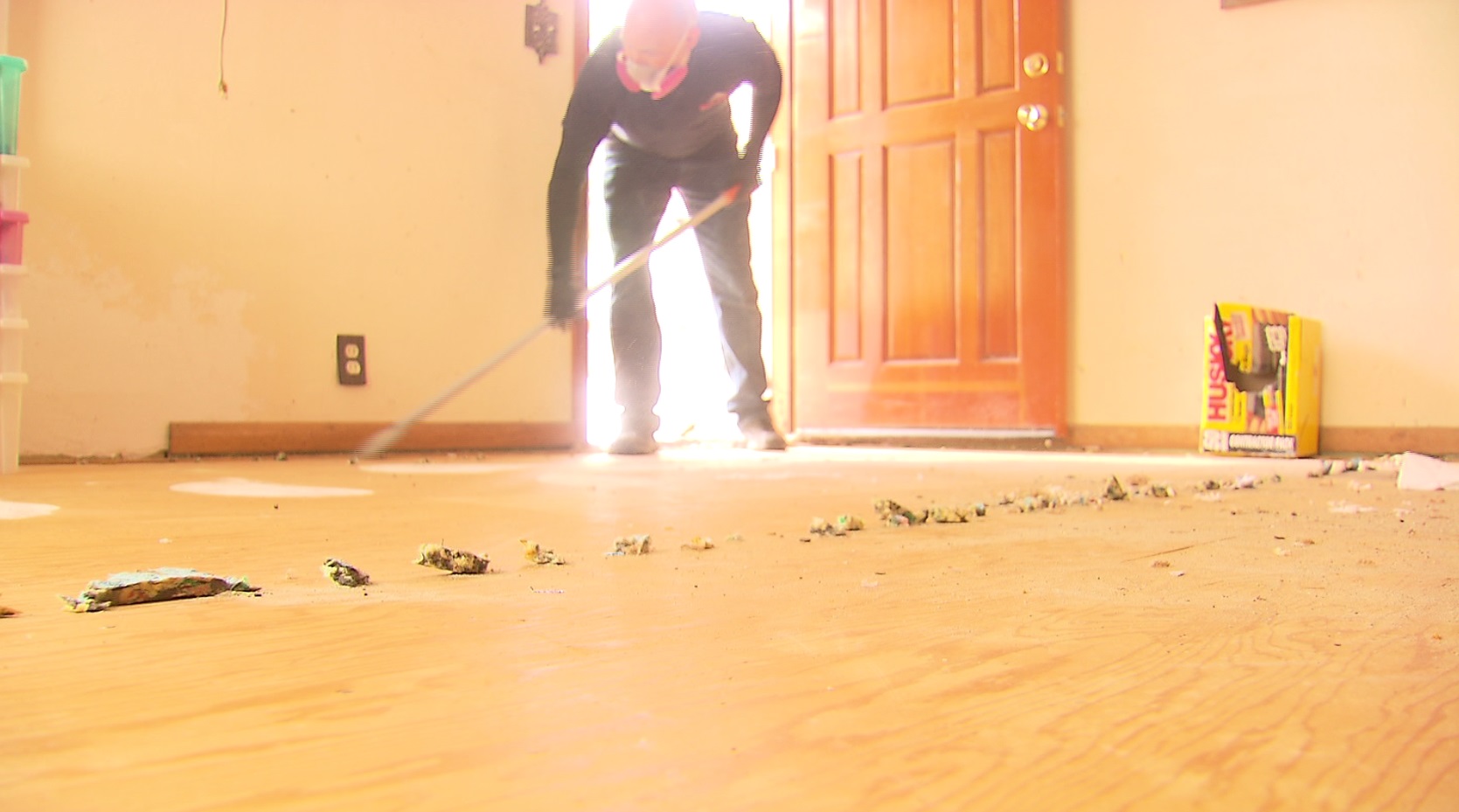ROSEBURG, Ore. (KOIN) — An Oregon company is digging in to help rescue people dealing with hoarding from their home.
A team from Steri-Clean was called to an elderly woman’s home Douglas County to help her clear the clutter from years of hoarding.
“I’ve lived in the house with its pathways for a year and a half,” said the client, who did not want to be identified.
With some stacks of household items, papers and trash at more than six feet high, it was becoming a matter of life or death.
“This is a very dangerous situation,” said owner Chris Gage, who traded in a job as a remodeling contractor and helicopter pilot to fulfill his passion of restoring hoarding homes.
“I got into this business to help people,” Gage said.
The woman allowed KOIN 6 News inside her world to inspire others to get help.
More about Steri-Clean
“It took me a while to let anybody in because of how embarrassed I was,” she said.
Gage called this client’s home a level 5 hoard — the most extreme rating.
“We can barely walk in here without tripping and falling,” Gage said. “I’m not sure how she gets through here.”
In the house, living room pathways led to a recliner that Gage called “the nest.” In hoards, it’s the only open spot in the room and typically where the hoarder spends most of their time.
The bathroom was a non-functioning bio-hazard and the bedroom was impassable.
“You can’t even get in,” Gage said.
After climbing over a wall of trash, the team discovered even more bedrooms and an office full of things.
“It’s very overwhelming,” said technician Marc Rosetti.
The kitchen was a fire hazard and also non-functioning.
“The stove top is completely covered,” Gage said. “You have 100 pots and pans for one person living here.”
Crews had to suit up with respirators before they started moving things around and cleaning up.
“Things are going to fall. Things are going to be dusty,” said Marc Rossetti of Steri-Clean.
Rita Prothero, an organizer with Tempa said, “The dangers were human waste, animal waste, mold, mildew.”
Watch: ‘Hoarding people need help’
The crew started at the front door, shoveling out bags of trash and papers — some covered in rodent feces and piles of birdseed, which is often stored by mice and rats.
“All these contents creates a big haven for rodents,” Gage said.
Gage had another case where his team found nearly 20 rodents in a couch.
“I put it on the ground and the sides [were moving],” he said. “The next thing you know Sarah and I see rats just shooting out.”
“We’ve had rats crawling up our boots,” lead technician David Brown said.
There are often clues in the mess of when the problems started for hoarders — like a newspaper found in this client’s home dated December 2015.
“It’s not about the contents. It’s about some tragic event that’s happened in their life,” Gage said.
The client explained that heart trouble and a stroke left her weak and losing her mom and husband caused things to get out of control.
“In 2016, both my mother and my husband passed,” she said. “I just didn’t feel like doing any of it.”
To ease that trauma, the team is specially trained to search for family treasures.
“We are just using this for some valuables,” Gage said. “We’ve found keys, a $5 bill. We’ll find thousands of dollars at times.”
In this client’s home, they uncovered a very important box in the rubble.
“It’s the ashes of her deceased husband,” Gage said.
“I get emotional, because it is emotional, and it helps them move forward,” Prothero said.
After only four hours of cleaning, the results were impressive.
“I think I’m making good progress with all of their help,” the client said.
The team also looked for things that could be donated, like brand new items.
Some of the memorable things Gage’s team have found include $300 worth of bottles, 1,000 rolls of wrapping paper, 70 expensive guitars, 105 remotes, $800 in cash, $3,000 worth of Beanie Babies and 10 egg whisks.

They sanitize with a futuristic-looking electrostatic gun. With it, they can spray one side of an item and a cleansing mist coats both sides.
“If you’re doing like toilet handles and that type of stuff — it gets all in the back side of it and you’ll never have to wipe that by hand,” Gage said.
They tear out the carpet, scrape the floor and use a huge HEPA filter to clean the air.
It took about three days total for Gage and his team to clean the client’s house.
She said now she can get back to sewing and encourages others to get help.
“The earlier you can get started on it the better,” she said.
“It is so satisfying at the end of the day what we are able to do to help the families and the clients move on from this,” Gage said.
Information about hoarding disorder and how to get help
